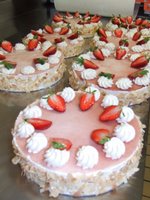THE OLDEST KNOWN TORTE IN THE WORLD.
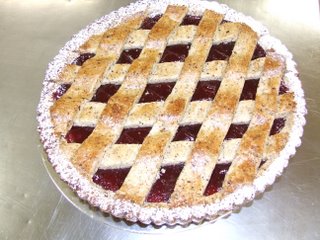
Did you know the Linzer torte is the oldest known torte or cake in the world, it was first mentioned using this name in 1696 making it over 300 years old.
More information on the history of the Linzer can be found at:
http://en.wikipedia.org/wiki/Linzer_Torte
You will be required to produce a Linzer torte for your final assessment so I have added a few pictures and information of the production method. Don't forget the bulk of the linzer is short pastry and therefore should be made using ingredients of a superior quality. It is a dry product that needs to be served in small portions tradionally with a beverage.
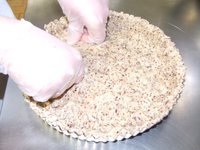 Produce the pastry according to the method in your module notes. Remember to Line the flan tin so the base is thicker then the sides. In class we made 120% of the recipe and used 800gms to line the base and sides. We used rolled the remianing paste for the lattice.
Produce the pastry according to the method in your module notes. Remember to Line the flan tin so the base is thicker then the sides. In class we made 120% of the recipe and used 800gms to line the base and sides. We used rolled the remianing paste for the lattice.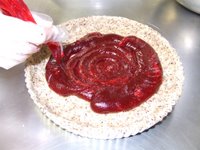
Once lined place 35ogms of Raspberry jam in the onto the base. Make sure the jam is spread evenly and that you do not get it all over the top edge of the pastry base. This will case the pastry to look unattractive when the product is baked.
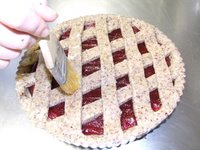
Carefully roll and cut the remaining pastry to produce a lattice effect on the top of the Linzer. for the best visual effect make sure you do not cut the strips wider then 1.5cm. Using an egg wash made only with egg yolks will produce a darker and richer looking glaze. Care should be taken when applying the glaze to ensure it does not leak onto the jam area of the torte resulting in a poor finish on the product. Remember this is an oven finished product, which will only require a light dusting of icing sugar around the edge of the product.

